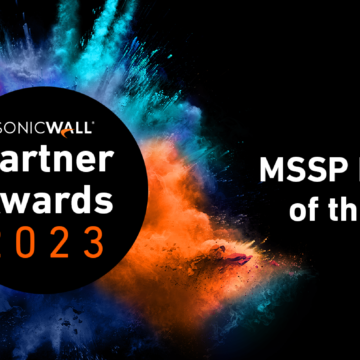The Difference Between SaaS, PaaS and IaaS

Cloud Computing has become extremely popular and has given IT departments the freedom to obtain the Cloud services and systems they desire on a monthly subscription.
To ensure that the Cloud service is being used effectively, IT leaders must choose the Cloud Computing Model that best aligns with their business needs.
The three most popular Cloud Computing models to choose from are:
- Software as a Service (SaaS)
- Infrastructure as a Service (IaaS)
- Platform as a Service (PaaS)
Each Cloud model has a different way of working. Therefore, it is important to research which model will better deliver value and align with your business needs. It is also important to ensure that the chosen Cloud model can help protect the organisation from the latest security threats, as well as facilitate your company’s potential for growth and change.
We’re going to explain each one in detail to help you with your decision.
Software-as-a-Service (SaaS)
Software-as-a-Service is a ready-to-use software application that provides multiple end-users, whether for business or for personal use, access to out-of-the-box applications over the internet.
Many popular applications that you may already use are Netflix, Slack, Zoom, HubSpot and Microsoft 365.
The beauty of SaaS is that you don’t really need to worry about how it’s set up or maintained, as it’s all managed by the SaaS provider. All you need to do is to purchase the application as a subscription, sign in and it’s ready to use.
Benefits of SaaS:
- Provides users access to flexible payments
- Easy to set up and/or install
- The usage is flexible for user and company requirements
- The application is completely managed by the SaaS vendor
- Security and feature updates are automatically applied to all applications
- Can be accessed over the internet, anytime, from any location
Limitations
- It’s up to you to ensure that the right security and controls are in place (e.g. Credential Storage and enforcing Multi-Factor Authentication)
- Possible downtime and outages out of your control
- Minimal control over compliance
- May have limited integrations
- Requires an internet connection
Platform-as-a-Service (PaaS)
Platform-as-a-Service contains the resources for software developers to create Software-as-a-Service applications. PaaS enables them to use the platform to develop, test, deploy, manage and maintain both the resources and software to better deliver the application to end-users.
Popular PaaS products are Windows Azure, Google App Engine and AWS Elastic Beanstalk.
Benefits of PaaS:
- Provides the ability to create custom software
- Faster deployment of applications
- Simple collaboration for developers
- Low risk testing environment
- Provides a scalable approach
- Improved efficiency
Limitations
- Software company is responsible for the security of the application
- Dependent on the security of the vendor internally
- Dependant on vendor capabilities as well as the infrastructure
- Less flexible
Infrastructure-as-a-Service (IaaS)
Infrastructure-as-a-Service is a fundamental layer of Cloud Computing that gives businesses access to a cloud-hosted infrastructure. IaaS contains networking features, computers (virtual on dedicated hardware) storage space and servers.
Examples of IaaS are Microsoft Azure, AWS and Google Cloud Engine.
For organisations that experience rapid growth, purchasing additional hardware can be costly. IaaS removes the need for additional or all hardware by accessing the required infrastructure online.
Benefits of IaaS
- Organisations have increased control over their infrastructure
- Provides flexibility and scalability on the infrastructure
- Reduced downtime
- Cost savings on hardware
- Advanced security
- Maintenance is provided by vendor
- Continuity and disaster recovery improvements
Limitations
- The organisation is responsible for the data and any data loss
- New processes and staff training will need to be applied
- IaaS relies on the internet
- Organisation is responsible for any integrated software upgrades
To make the difference between SaaS, PaaS and IaaS easier to understand, these analogies may help.
Having an on-premise infrastructure is similar to owning a car: you’re responsible for any maintenance, damages, and when you want to upgrade, you buy a new vehicle.
If you want all the benefits of using a car, but you don’t want the responsibility, you could hire one. Infrastructure-as-a-Service works in a similar way.
However, if there is no necessity to own your own car, but you still need to travel to a specific destination, you’re likely going to call a taxi or an Uber. This is similar to Platform-as-a-Service as it provides the environment and control needed for you to reach your own goal without having the responsibility of the environment itself.
Lastly, if you don’t own a car but want to go somewhere generic, such as your local town center, the bus would be a really good option. This is a good option as the bus has a set route with multiple destinations. Once you’ve paid and sat down, you don’t really need to think about your journey. Software-as-a-Service works in a similar way as multiple people can use the same service for their own personal use.
Looking to migrate or change your Cloud Computing Strategy?
Cloud Computing plays a major part in how we work and will continue to do so for years to come. Because so many options are available, Cloud Computing offers a range of benefits to fulfil all business requirements—no matter how big or small.


